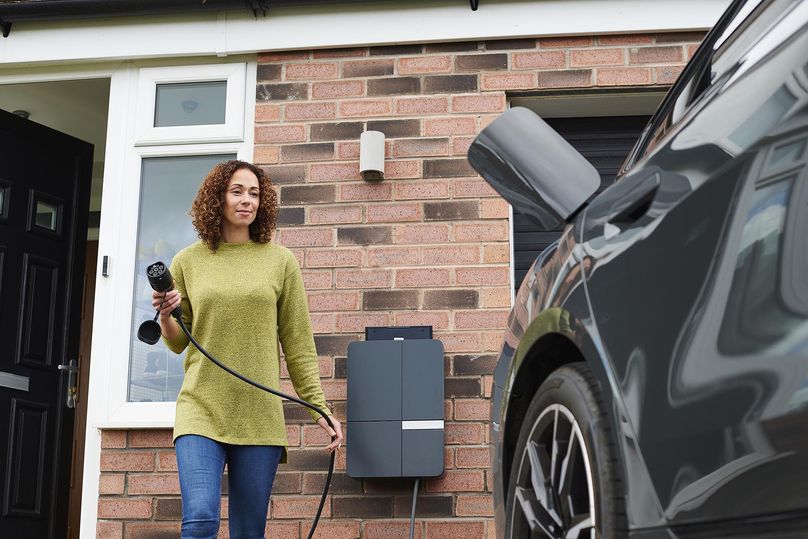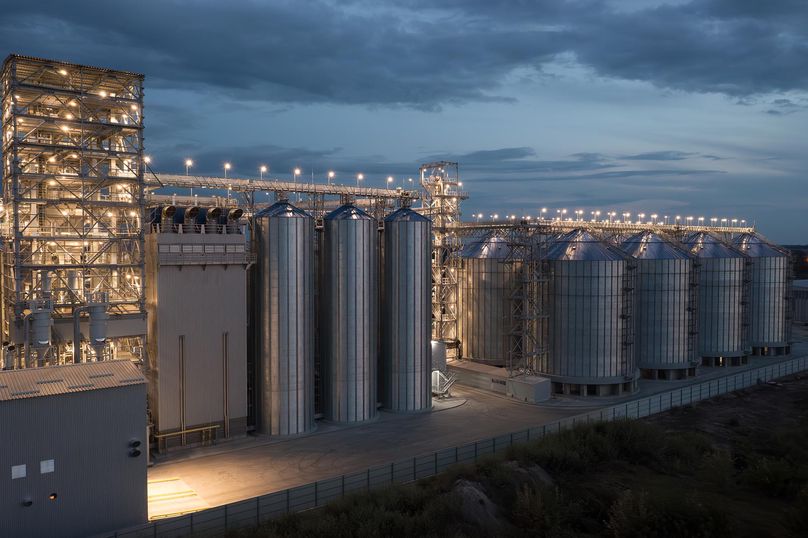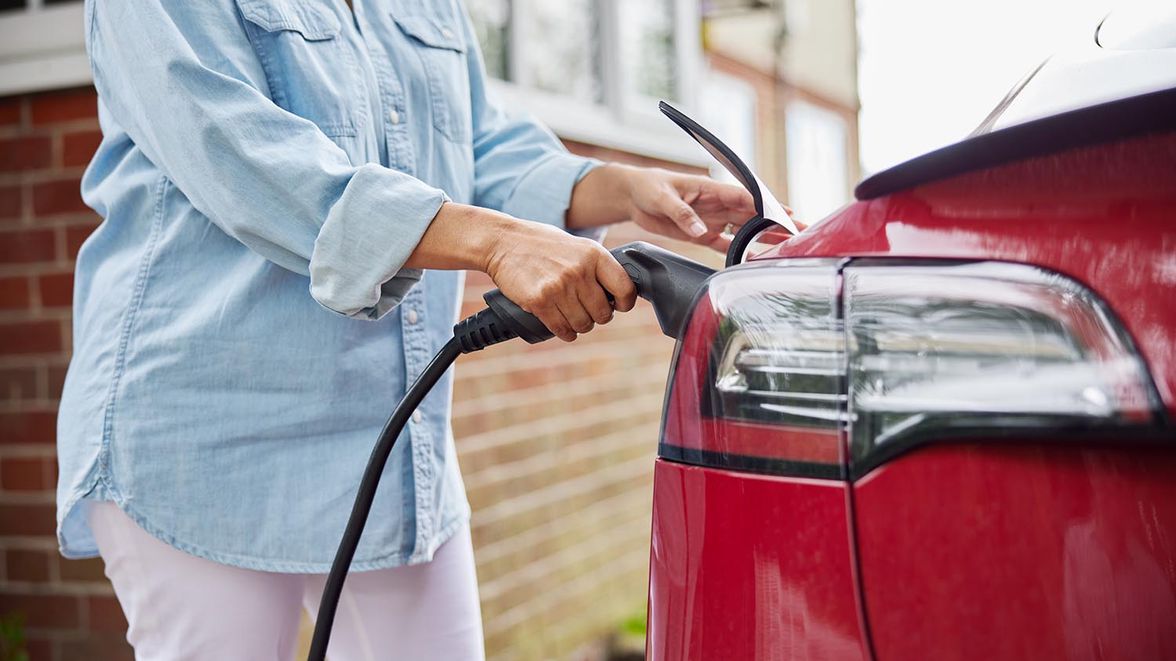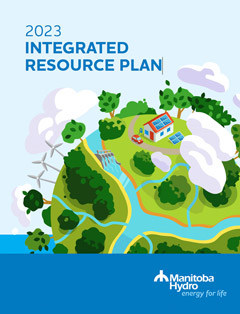There’s lots of talk about the “energy transition” on the news, on TV and on social media. It’s a hot topic in industry, government, and other forums. You may also have heard the term in relation to things like electric vehicles (EVs), renewable energy sources, decarbonization, fossil fuel alternatives, space heating, and climate change.
But let’s get specific – what does “energy transition” really mean?
Energy – how it’s made, how it’s delivered and how it’s used – is changing
According to Lindsay Hunter, manager of Manitoba Hydro’s IRP Policy and Coordination department, the phrase “energy transition” covers many different topics because its implications are so broad and may influence many different aspects of our world.
“In brief, the energy transition is the shift in how energy is made, delivered and used all around the world,” Lindsay said. “A large part of this transition is a shift from fossil-based energy like coal, oil, and natural gas to different energy sources like wind, solar and hydroelectricity.
A large part of the energy transition is a shift from fossil-based energy to different sources like wind.
One example of this change is the increasing number of customers shifting from buying internal combustion engine vehicles (fueled by gasoline or diesel) to vehicles powered by electricity or potentially hydrogen. Another is the growth in customers using technologies such as ground or air source heat pumps to heat their homes instead of or alongside natural gas. Even the shift to battery powered chainsaws, leaf blowers and lawn trimmers is part of this energy transition.
Utilities and energy providers need to consider this shift to more vehicles and appliances that depend on electricity — and other factors, like energy efficiency programs and technology — when they plan and invest in energy infrastructure to meet growing demand.
“And when we talk about changes to how energy is generated, we’re talking about how utilities or other generators produce energy, for example using hydroelectricity or wind generation to produce electricity, using natural gas for heating, or refining petroleum products to produce gasoline,” Lindsay said.
“Right now, most of Manitoba Hydro’s energy is hydroelectricity – electricity generated by the flow of water. In the future, Manitoba’s new energy needs could come from different sources like wind. But it isn’t always windy, which means there will continue to be an important role to play for more dependable sources of energy like natural gas and hydroelectricity ensure the reliability of our energy supply. This is another part of what we mean when we talk about the change in the way energy is generated and how that relates to the energy transition.”
The ways in which we deliver energy are also shifting in the energy transition.
“Currently, petroleum companies deliver gasoline to our cars, and we have utilities like Manitoba Hydro delivering electricity to our homes,” Lindsay said. “But there are changes happening with the way energy is delivered. For example, rather than filling your internal combustion engine car with fuel at a gas station, owners of electric vehicles (EVs) could be charging them at home.
”There are also more customers looking for options to enhance the energy efficiency of their home or business. That change in behaviour among consumers creates challenges and requires energy suppliers like Manitoba Hydro to adapt.”

Owners of electric vehicles could be charging their vehicles at home instead of filling them up at a gas station.
Enlarge image: An electric vehicle and charger at someone’s home.
The energy transition has begun
Some parts of the energy transition may seem futuristic, like biomethane, battery energy storage for your home or bidirectional charging to and from your electric vehicle. While these technologies have not yet been widely adopted in Manitoba, they exist today in other parts of the world – and they may make their way to Manitoba in the future.
That said, the energy transition has already begun in Manitoba in other ways. For example, many Manitobans are choosing to purchase electric vehicles (Manitoba set a record for EV sales last quarter.)
And it’s not just individual consumers taking part in the energy transition. Some large commercial and industrial energy users in Manitoba are taking action to decarbonize their operations by choosing to shift their processes or heating from natural gas to electricity, helping them reach their own emission reduction targets. Others are looking at how natural gas might complement other less mature technologies like ground- or air-source heat pumps.

Some large commercial and industrial energy users are decarbonizing their operations by shifting their processes or heating from natural gas to electricity. Others are exploring how natural gas could complement other energy sources for heating.
Along with changes in the type of energy customers are using, there are changes in who is producing it. Some Manitoba Hydro customers may choose to generate their own electricity through solar (or photovoltaic) panels they install on their home or business. The decision to build and use solar panels is just one of many energy-related choices with implications for Manitoba’s electrical infrastructure and the energy market — implications including the potential need for greater investment in our energy system to ensure we can meet our customers’ needs.
“The energy transition is already having an impact on Manitoba Hydro,” Lindsay said. “We serve the whole province, and because of the energy transition, we are very likely to be taking on a larger share of total energy supply in the province.
“For example, if you look again at the shift from internal combustion engines to EVs, power for those EVs represents an entirely new demand for electricity. It’s not energy Manitoba Hydro has provided before – it’s brand-new energy load that we will likely need to serve in future, whether through hydropower, wind generation, or other means.”
The biggest factor driving the energy transition? Decarbonization.
Climate change is one of the defining issues of our era – and individuals, utilities, governments and other organizations around the world are responding.
One way many organizations are trying to mitigate the effects of climate change is through decarbonization – reductions in the amount of greenhouse gases in the atmosphere, in part by reducing carbon emissions from energy.
“It’s one of the biggest factors impacting the energy transition,” Lindsay said. “Decarbonization has huge implications on decisions about energy in the future.
“Other aspects like decentralized energy infrastructure (for example, district energy systems that use recovered thermal energy to heat or cool a neighbourhood) and growth in digital technologies also affect the transition, but decarbonization is the big one.”
Decarbonization comes with challenges. For example, natural gas (a carbon-emitting fuel source) is vital to meeting demand for heating, and in a province where temperatures regularly dip below -40 C each winter, reliable heating is non-negotiable. However, other decarbonization options – like hydrogen for fuel and innovations in natural gas – are already showing promising results as our society continues to decarbonize.
And while we know for sure that the energy transition is already underway, we can only estimate the pace of change.
“It could be slow, or it could be fast – it all depends on when people start making their choices as part of the transition,” Lindsay says. “But the transition is already happening, and as a utility that supplies energy to hundreds of thousands of customers, Manitoba Hydro is making sure that we plan for this change.”
Manitoba Hydro’s Integrated Resource Plan: preparing for your energy future
2023 Integrated Resource Plan
- Download the 2023 Integrated Resource Plan (PDF, 12 MB)
Through Integrated Resource Planning, Manitoba Hydro is working to understand our province’s future energy needs and what steps may be necessary to manage the change and ensure we can continue delivering safe, reliable energy, now and into the future.
“We’re preparing for the energy transition, and we’re focused on Manitoba,” Lindsay said. “Whether it’s planning for our future decisions about necessary investments or managing the potential for impacts on our customers, our Integrated Resource Plan is a repeatable process we regularly update to help us keep on top of and respond to changes occurring in the energy landscape. It’s a tool to help us make sure we make the right decisions at the right time so we can lean into the energy transition prepared and ready to serve our customers.”
Manitoba Hydro is hard at work on a new Integrated Resource Plan (IRP) expected to be completed in the fall of 2025.
Curious about the energy transition, the factors influencing our energy future or Manitoba Hydro’s IRP? Learn more about our Integrated Resource Plan.





